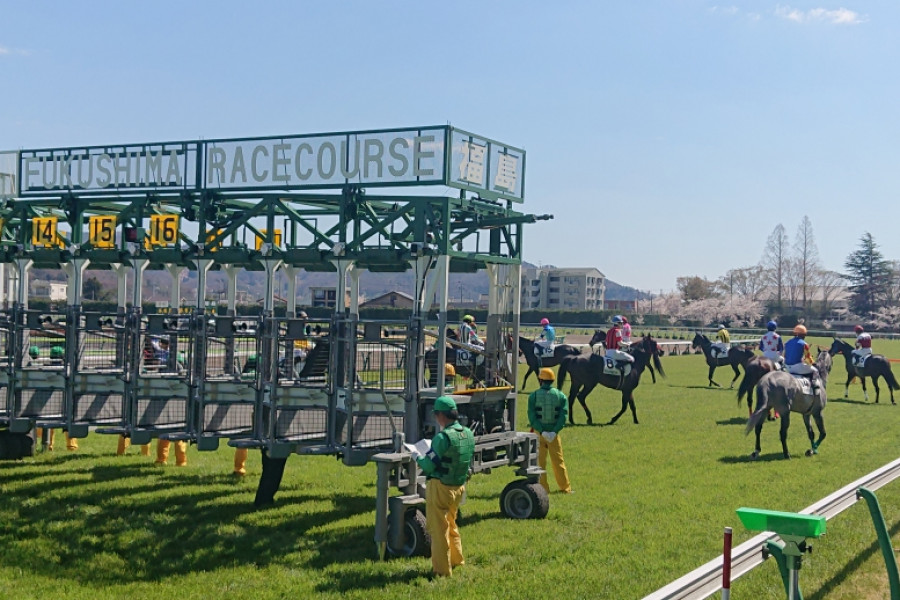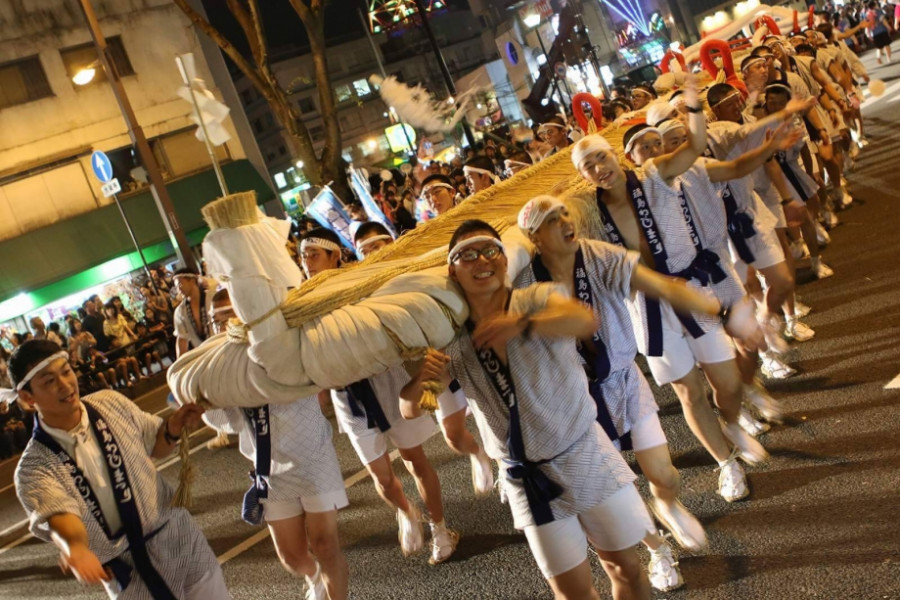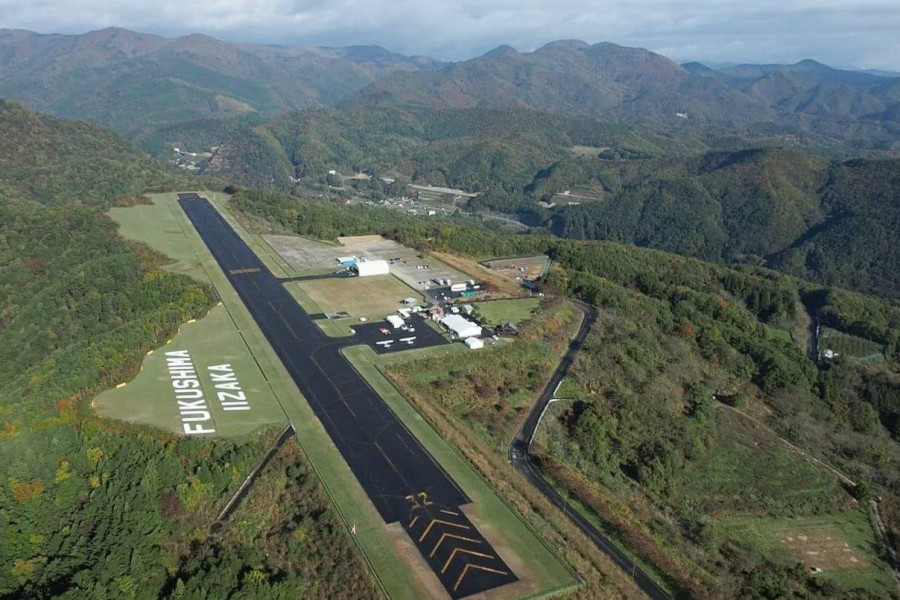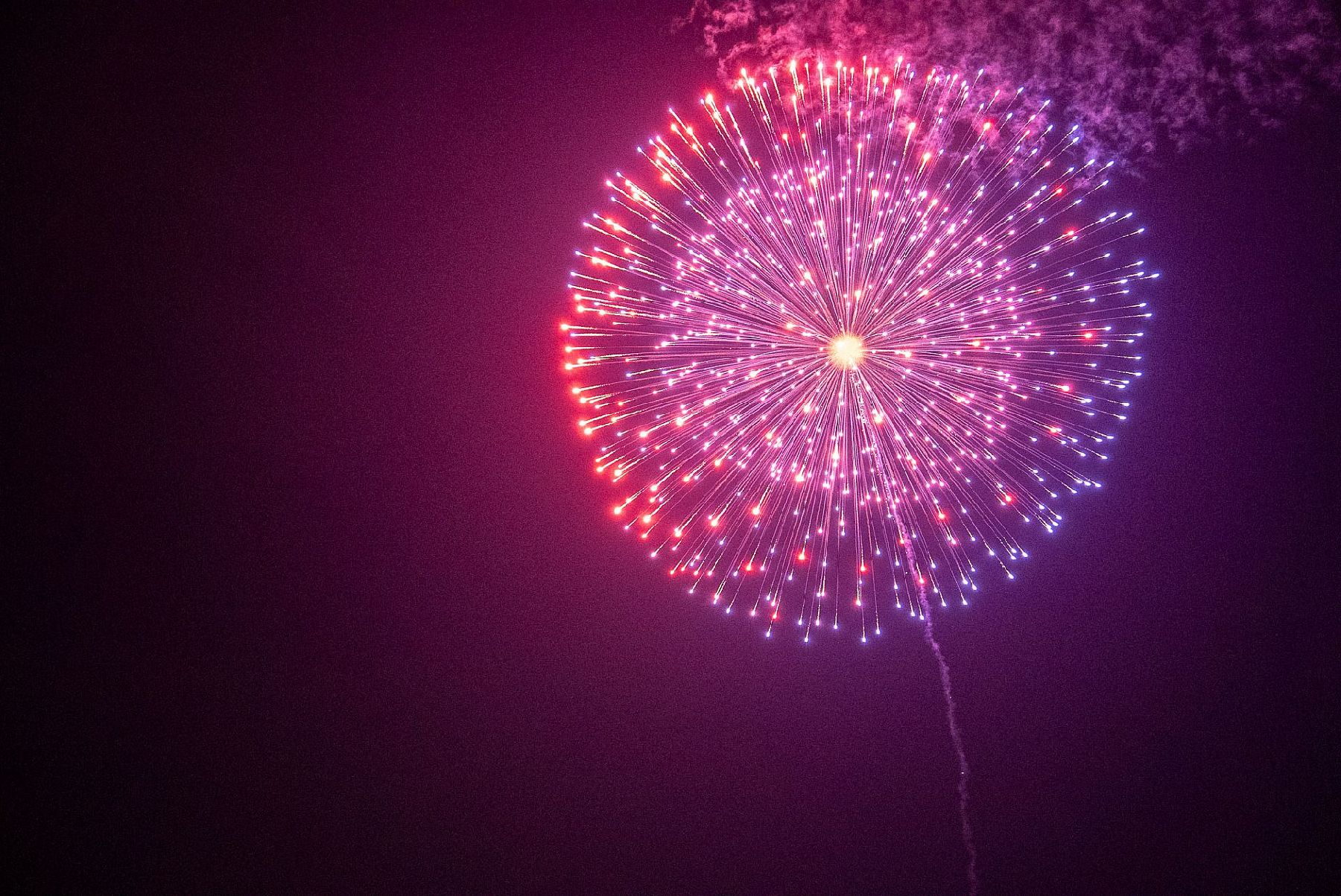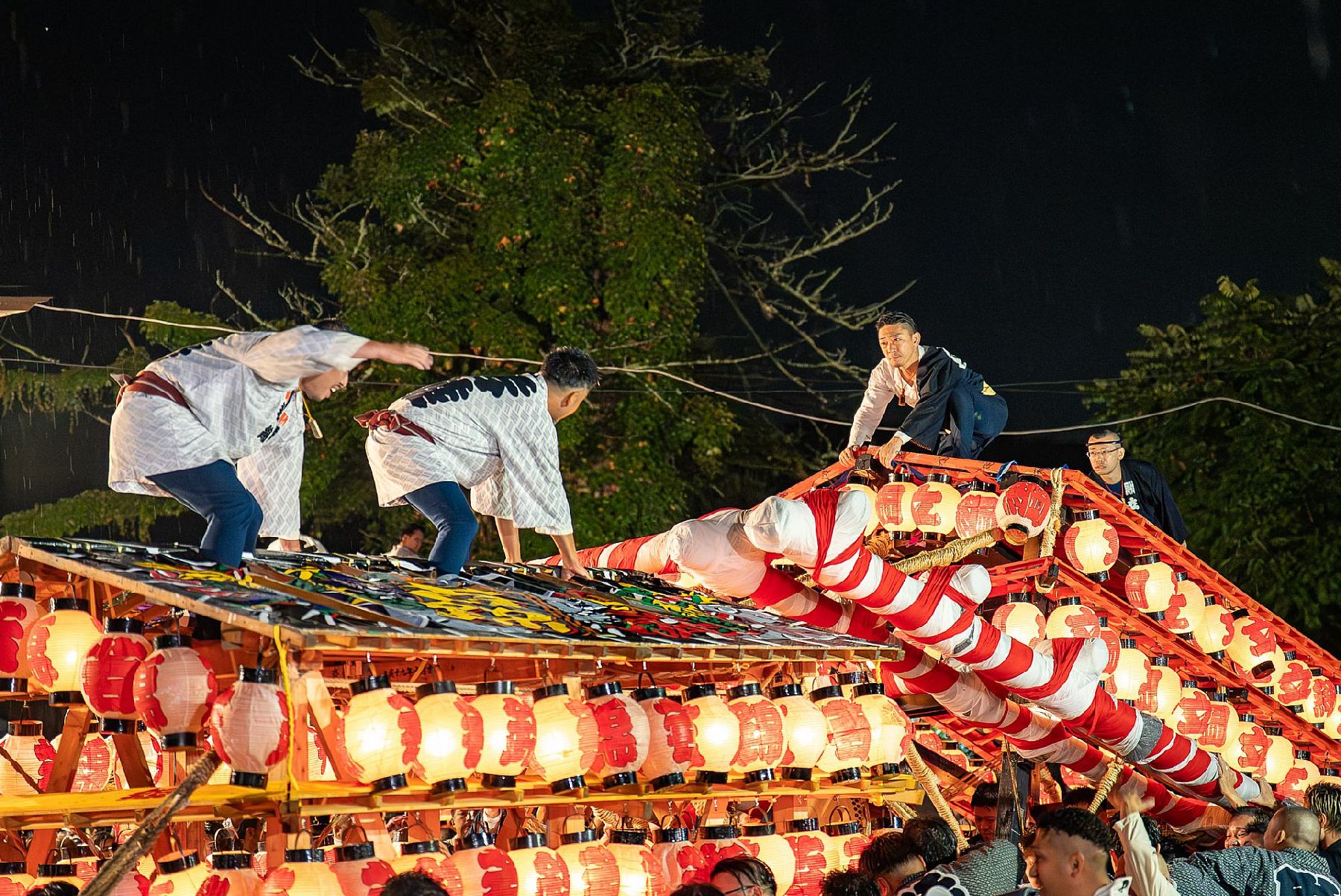Fukushima City’s local summer festival ‘Fukushima Waraji Matsuri’ started in 1970. It is said that, despite its short history, this festival has its roots in an Edo Period traditional event known as the ‘Akatsuki-mairi’ (or Mt. Shinobu Dawn Procession).
During the festival evenings, locals parade a huge straw sandal (known as a waraji) along Route 13. This procession is followed by many different groups, who perform dances around town. The first evening is filled with music from the Showa Era, while the songs of the second night are modern and very upbeat.
This waraji weighs around 2 tons, is 12 metres in length, and is thought to be one of the biggest in Japan. Every February, local people follow the tradition of dedicating the waraji to Haguro Shrine on Mt. Shinobu, which is thought to help keep legs healthy and strong.
The festival is held on the first weekend of August, with the 2025 festival likely to be held from Friday 1 to Sunday 3 August, 2025.
